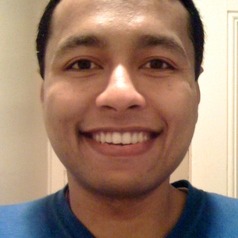By Avi Roy. Re-posted with permission from The Conversation.
In rich countries, more than 80% of the population today will survive past the age of 70. About 150 years ago, only 20% did. In all this while, though, only one person lived beyond the age of 120*. This has led experts to believe that there may be a limit to how long humans can live.
Animals display an astounding variety of maximum lifespan ranging from mayflies and gastrotrichs, which live for 2 to 3 days, to giant tortoises and bowhead whales, which can live to 200 years. The record for the longest living animal belongs to the quahog clam, which can live for more than 400 years.
If we look beyond the animal kingdom, among plants the giant sequoia lives past 3,000 years, and bristlecone pines reach 5,000 years. The record for the longest living plant belongs to the Mediterranean tapeweed, which has been found in a flourishing colony estimated at 100,000 years old.
Some animals like the hydra and a species of jellyfish may have found ways to cheat death, but further research is needed to validate this.
The natural laws of physics may dictate that most things must die. But that does not mean we cannot use nature’s templates to extend healthy human lifespan beyond 120 years.

Hayflick limit and telomeres: Putting the lid on the can
Gerontologist Leonard Hayflick at the University of California thinks that humans have a definite expiry date. In 1961, he showed that human skin cells grown under laboratory conditions tend to divide approximately 50 times before becoming senescent, which means no longer able to divide. This phenomenon that any cell can multiply only a limited number of times is called the Hayflick limit.
Since then, Hayflick and others have successfully documented the Hayflick limits of cells from animals with varied life spans, including the long-lived Galapagos turtle (200 years) and the relatively short-lived laboratory mouse (3 years). The cells of a Galapagos turtle divide approximately 110 times before senescing, whereas mice cells become senescent within 15 divisions.
The Hayflick limit gained more support when Elizabeth Blackburn and colleagues discovered the ticking clock of the cell in the form of telomeres. Telomeres are repetitive DNA sequence at the end of chromosomes which protects the chromosomes from degrading. With every cell division, it seemed these telomeres get shorter. The result of each shortening was that these cells were more likely to become senescent.
Other scientists used census data and complex modelling methods to come to the same conclusion: that maximum human lifespan may be around 120 years. But no one has yet determined whether we can change the human Hayflick limit to become more like long-lived organisms such as the bowhead whales or the giant tortoise.
What gives more hope is that no one has actually proved that the Hayflick limit actually limits the lifespan of an organism. Correlation is not causation. For instance, despite having a very small Hayflick limit, mouse cells typically divide indefinitely when grown in standard laboratory conditions. They behave as if they have no Hayflick limit at all when grown in the concentration of oxygen that they experience in the living animal (3-5% versus 20%). They make enough telomerase, an enzyme that replaces degraded telomeres with new ones. So it might be that currently the Hayflick “limit” is more the Hayflick “clock”, giving readout of the age of the cell rather than driving the cell to death.
The trouble with limits
The Hayflick limit may represent an organism’s maximal lifespan, but what is it that actually kills us in the end? To test the Hayflick limit’s ability to predict our mortality we can take cell samples from young and old people and grow them in the lab. If the Hayflick limit is the culprit, a 60-year-old person’s cells should divide far fewer times than a 20-year-old’s cells.
But this experiment fails time after time. The 60-year-old’s skin cells still divide approximately 50 times – just as many as the young person’s cells. But what about the telomeres: aren’t they the inbuilt biological clock? Well, it’s complicated.
When cells are grown in a lab their telomeres do indeed shorten with every cell division and can be used to find the cell’s “expiry date.” Unfortunately, this does not seem to relate to actual health of the cells.
It is true that as we get older our telomeres shorten, but only for certain cells and only during certain time. Most importantly, trusty lab mice have telomeres that are five times longer than ours but their lives are 40 times shorter. That is why the relationship between telomere length and lifespan is unclear.
Apparently using the Hayflick limit and telomere length to judge maximum human lifespan is akin to understanding the demise of the Roman empire by studying the material properties of the Colosseum. Rome did not fall because the Colosseum degraded; quite the opposite in fact, the Colosseum degraded because the Roman Empire fell.
Within the human body, most cells do not simply senesce. They are repaired, cleaned or replaced by stem cells. Your skin degrades as you age because your body cannot carry out its normal functions of repair and regeneration.
Can we substantially increase our lifespans?
If we could maintain our body’s ability to repair and regenerate itself, could we substantially increase our lifespans? This question is, unfortunately, vastly under-researched for us to be able to answer confidently. Most institutes on aging promote research that delays onset of the diseases of aging and not research that targets human life extension.
Those that look at extension study how diets like calorie restriction affect human health or the health impacts of molecules like resveratrol derived from red wine. Other research tries to understand the mechanisms underlying the beneficial effects of certain diets and foods with hopes of synthesising drugs that do the same. The tacit understanding in the field of gerontology seems to be that, if we can keep a person healthy longer, we may be able to modestly improve lifespan.

Living long and having good health are not mutually exclusive. On the contrary, you cannot have a long life without good health. Currently most aging research is concentrated on improving “health”, not lifespan. If we are going to live substantially longer, we need to engineer our way out of the current 120-year-barrier.
*The longest confirmed human lifespan in history belonged to Jeanne Louise Calment, according to the Guinness Book of Records, 1999 edition. She lived from 1875 to 1997, dying at age of 122 years, 164 days. She lived in Arles, France for her entire life, outliving both her daughter and grandson by several decades. She entered the Guinness Book of records in 1999, but apparently, in the intervening years, no one beat her record.
Bottom line: Is there a limit to how long humans can live? The Hayflick limit and discovery of telomeres – added to census data – suggest the that maximum human lifespan may be around 120 years. However, this evidence is not entirely convincing, and some researchers believe it might be possible – via research on life extension and continued research on good health practices and the abolishment of certain diseases – to learn what would enable us humans to substantially increase our lifespans.











